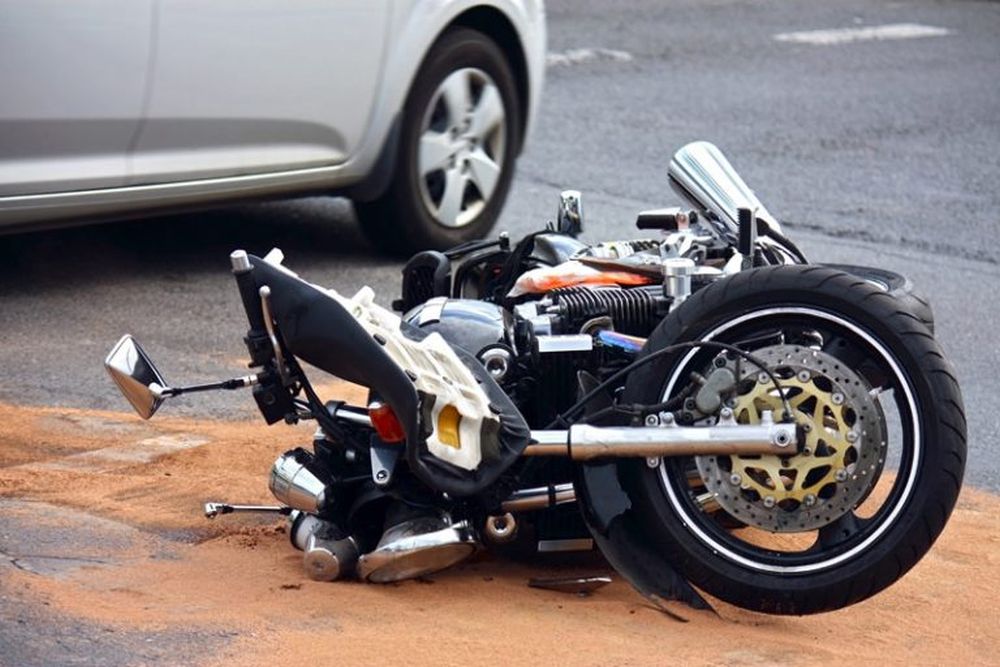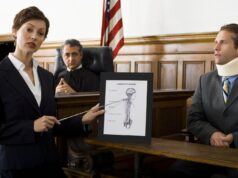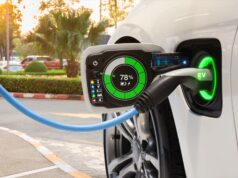Few things can be compared to the freedom a motorcycle gives. You simply slip into your gear and shoot down the highway in your mechanical chariot, with nothing to stop you.
Unfortunately, motorcycle riding is fraught with risk. The statistics back up the previous statement. An Insurance Institute for Highway Safety (IIHS) report states that over 6,000 motorcycle riders lost their lives in collisions in 2021.
Deaths aside, motorcycle accidents also cause serious injuries. Some of the common injuries in a motorcycle accident include:
- Fractures
- Whiplash
- Back injury
- Road rash
- Head injury
These injuries can either be minor ones that require a couple of hours of rest and a few bandages. Or, so severe that it may disable you for life. In some extreme cases, it may even take your life.
But here’s the weird part.
Motorcycle accidents don’t necessarily need to be “accidents.”
You can be involved in a motorcycle accident without a vehicle ramming into you.
No Contact Motorcycle Accidents
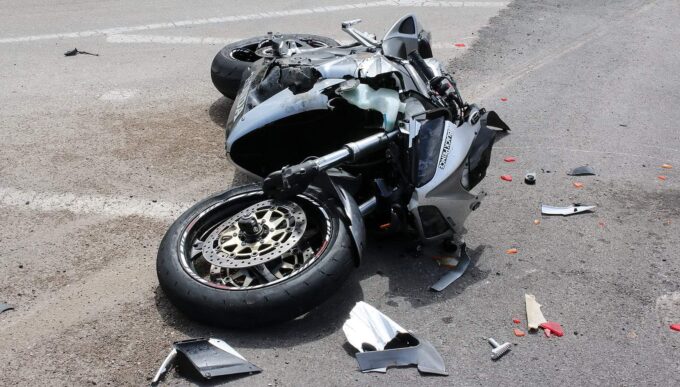
As said earlier, a motorcycle rider can hurt themself without colliding with another vehicle. This is called a “no contact” motorcycle accident.
This is the type of accident where a motorcycle rider crashes or lays their motorcycle down to avoid a collision with another vehicle.
Consider this scenario.
You have your gear on and are going on a relaxing ride within the speed limit.
Suddenly, a parked car, unmindful of the rider, starts moving and enters the lane. You know that swerving left will put you in the lane with oncoming vehicles. So you hit the brakes and jump off the motorcycle to avoid injuries.
This is a typical example of a no contact motorcycle accident.
The problem here is that once you have jumped, you are at risk of being hit by other vehicles. Not to forget, you may also lose your balance and end up falling. Elements that one can find on the road, like poles or signs, have the ability to cause injury if you fall on them.
No Motorcycle Accident – Liability
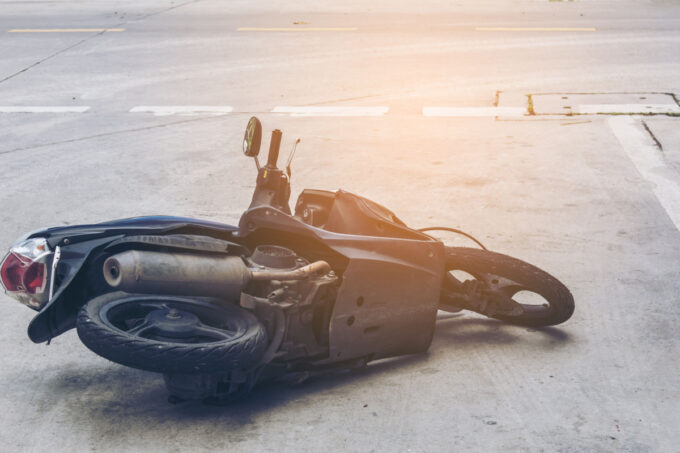
Like a personal injury case, negligence plays a role here as well. In personal injury law, negligence is the responsibility of an individual to exercise reasonable care for the safety of those around them.
Since motorcycle accidents come under personal injury law, the driver will have to consider four elements to prove liability.
- Duty of Care
- Breach of Duty of Care
- Causation
- Damages
In the majority of cases, the driver of the vehicle that forced the rider to lay down his motorcycle is the liable party.
This is because all drivers and riders share a common responsibility. To obey traffic laws, be attentive to their surroundings, and not act in ways that could cause harm to fellow citizens.
Another responsibility is to be on the lookout for elements that may cause harm, either to themselves or others. These elements can be:
- Other vehicles
- Bikes
- Pedestrians
- Pets
- Debris
A failure to fulfill this responsibility often makes other drivers the liable party in a no contact motorcycle accident.
Causes of No Contact Motorcycle Accidents
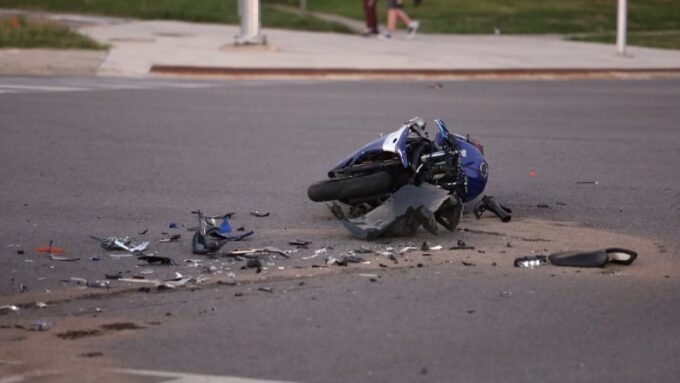
Most of the time, human errors are the reason for no contact motorcycle accidents.
But that’s not to say Mother Nature doesn’t have a role in them.
Sometimes, a rider may slip off a wet road to avoid crashing into a car. In this case, although the car driver is the liable party, the wet road increased the chances of the rider falling off their motorcycle.
Here are some of the common reasons for a no contact motorcycle accident:
- Distracted driving
- Reckless driving
- Road rage
- Not checking blind spots
- Failure to follow right-of-way laws
- Driving under the influence of alcohol, drugs, or any medication with severe side effects
- Poor lane-changing habits
No Contact Motorcycle Accidents – Damages
Yes, the chances of a life-altering injury are comparatively low. But you cannot rule them out completely.
Just like all accidents, no contact motorcycle accidents have the capability of causing some serious damage.
These are some of the damages a rider who’s been involved in a no contact motorcycle accident will have to face.
Medical bills
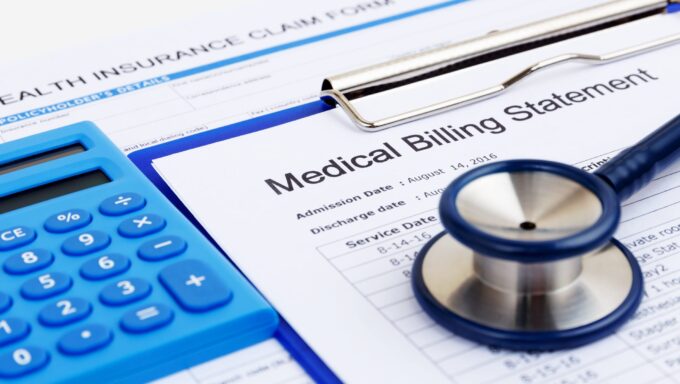
As said before, the chances of an injury are low in no contact motorcycle accidents. But the rider may suffer an injury due to external elements.
By external elements, we mean that the rider may end up in a dangerous situation after laying their motorcycle. They may jump off but land in the path of another vehicle. This results in injuries that can be severe.
Property damage
This is one of the most common losses suffered in a no contact motorcycle accident. Although minor, the motorcycle suffers some kind of damage. It can be a few dents or other serious damage, depending on the circumstances of the accident.
Pain and suffering
Physical injuries aside, pain as an effect of an accident is seldom discussed. Even after recovery, the victim may experience some kind of pain that might interfere with their day-to-day life.
In addition to pain, depending on how serious the no-contact accident was, the victim may sustain emotional disturbance as well. They may suffer from post-traumatic stress disorder after the accident.
If the accident was serious, the victim may remember the accident, either occasionally or triggered by a specific event.
Lost wages
Some accident injuries may require multiple hospital visits and extensive rest. A victim of a no-contact motorcycle accident will have to miss work to tend to their injuries. Missed work means missed wages.
In the aftermath of a no-contact motorcycle accident, navigating through medical bills and damages can be overwhelming. If you find yourself in such a situation, seeking guidance from an experienced personal injury lawyer can make a significant difference.
Some Tips to Follow
No contact motorcycle accidents happen when you least expect them.
If you’ve been injured, consider these tips. They’ll come in handy when pursuing the liable parties legally.
- Hire a motorcycle accident lawyer and follow their advice.
- Collect the other driver’s information. Snap photographs of their vehicle(s), its license plate, and anything else you think is important.
- Don’t rush to repair your vehicle. Doing so hurts your claim. Wait for the insurance adjuster to inspect the damaged vehicle.
- Avoid confrontation with the concerned driver.
- Talk with eyewitnesses and collect their statements.

